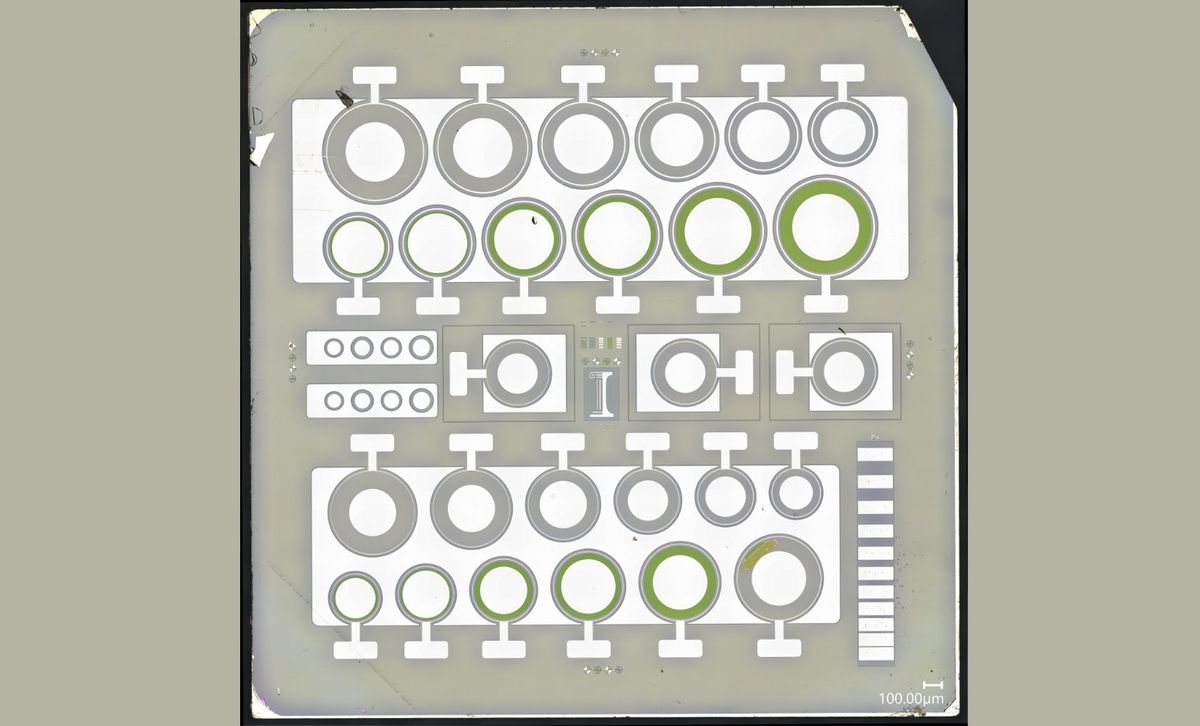This article is part of our exclusive IEEE Journal Watch series in partnership with IEEE Xplore.
High-voltage power grids could prove more efficient for renewable energy. Now a new study finds that diamond electronics could be more effective than silicon for operating these grids.
The global demand for electricity will increase by nearly 50 percent by 2050, according to the U.S. Energy Information Administration. At the same time, “in the U.S. alone, two-thirds of the generated energy cannot reach to the customer and is lost,” says Can Bayram, associate professor of electrical and computer engineering at the University of Illinois, Urbana-Champaign.
“Power electronics based on semiconducting diamond will enable the next-generation, carbon-free grid.”
—Can Bayram, University of Illinois, Urbana-Champaign
One way to boost power-grid efficiency is to switch from alternating current to direct current, Bayram says. A DC grid would eliminate the need for rectifiers that convert AC to DC, and can reduce the need for transformers that help lower voltage for distribution. “The resultant DC power grid is projected to reduce today’s AC grid losses by 90 percent,” Bayram says.
In addition, high-voltage DC grids are more efficient at carrying energy over long distances than AC grids. This suggests they could prove especially useful for solar and wind farms, which are often located far away from the customers they serve.
Supporting this kind of grid requires power electronics—devices that help control and channel the flow of electricity. Currently power electronics control more than 50 percent of the world’s electricity, a number projected to increase to 80 percent by the year 2030 in part because of the increasing adoption of renewable energy, Bayram says.
A DC grid with high currents and voltages will call for power electronics that are faster and stronger than current silicon devices, Bayram argues. “We assert that power electronics based on semiconducting diamond will enable the next-generation, carbon-free grid,” he says.
Diamond is the hardest semiconductor known, and is also one of the best-known thermal conductors. In addition, it has a high breakdown voltage—that is, it supports a high voltage before it becomes electrically conductive. These and other properties mean that diamond semiconductor devices can operate at much higher currents and voltages with less material than conventional electronics, and will still dissipate heat without experiencing a reduction in electrical performance.
“Other notable benefits include lower costs in shipping, transportation, installation, and being able to use a smaller installation crew, because the system weighs less,” Bayram says.
“Converters based on diamond will be cost competitive, because even if the diamond device itself is more expensive than usual silicon devices, the reduction of the semiconductor size and the simplification of the system including the thermal management will significantly reduce the overall cost.”
—Can Bayram, University of Illinois, Urbana-Champaign
One of the most common components in modern electronics is the diode, in which electricity flows in just one direction. In power electronics, one way to help diodes withstand high voltages is to increase the thickness of the “drift region” separating the electrode layers. This is a problem with diamond-based devices—increasing drift-region thickness requires growing more diamond and etching deeper, both of which are challenging tasks.
All these layers are typically grown in a vertical stack. In the new study, the researchers switched to a lateral architecture. They could then scale up breakdown voltages by adjusting the horizontal distance between the electrodes without the need for a thick drift layer.
“As a result, our team achieved record-high breakdown voltages—about 5,000 volts—in drift layers as thin as a few microns,” Bayram says. It also displays the lowest leakage current of diamond devices, a property that influences the overall efficiency and reliability of the device.
The researchers say they aim to continue optimizing their device to approach the performance limits of diamond’s potential.
“We believe diamond will enter the semiconductor market at high-end power levels, more than 5 megawatts,” Bayram says. “Converters based on diamond will be cost competitive, because even if the diamond device itself is more expensive than usual silicon devices, the reduction of the semiconductor size and the simplification of the system including the thermal management will significantly reduce the overall cost.”
The scientists detailed their findings in the journal IEEE Electron Device Letters.
- Diamond-Based Quantum Accelerator Puts Qubits in a Server Rack ›
- This Diamond Transistor Is Still Raw, But Its Future Looks Bright ... ›
Charles Q. Choi is a science reporter who contributes regularly to IEEE Spectrum. He has written for Scientific American, The New York Times, Wired, and Science, among others.



